Currently, walls and bends can be recognized. Hems are recognized as walls.
Open the NEWRecognize01.CATPart document.
This document contains a part created in the Part Design workbench:
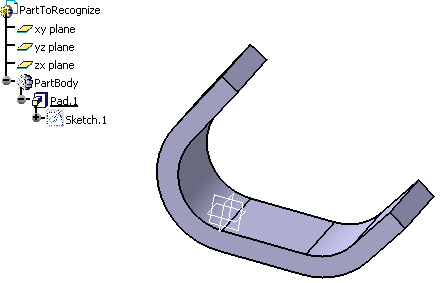
-
Click Recognize
 .
The Recognize Definition dialog box is displayed.
.
The Recognize Definition dialog box is displayed.
-
Select a reference face. It will be the reference face for unfolding and for the definition of the sheet metal parameters (i.e. all default parameters will be based on this face).
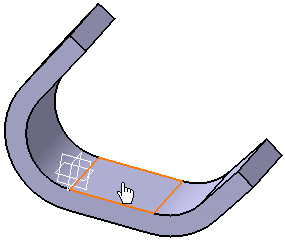

You can get a preview of the recognized features by clicking the Display recognized features button: it allows you to highlight them with the selected color. -
Click OK to validate.
The walls are generated from the Part Design geometry. The Recognize.1 feature is added to the tree view.
At the same time, the sheet metal parameters are created, deduced from the Part geometry.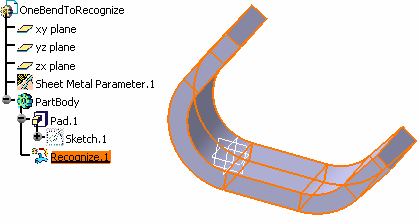
-
Click Sheet Metal Parameters
 .
. 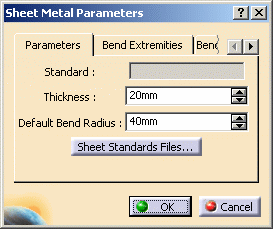
On the Parameters tab:
-
the Thickness is equal to 20mm,
-
the Default Bend Radius value amounts to twice that of the thickness.
On the Bend Extremities tab:
-
the bend extremities are set to Minimum with no relief.
You can modify a few of these parameters. The Thickness parameter cannot be modified because it is based, like the bend extremities and radius, on the initial solid geometry. However, you can modify other parameters (default bend radius and bend extremities) in order for them to be taken into account for sheet metal features other than the "recognized" ones.
The bend allowance, being used to unfold the part, and the bend corner relief affect all features, and therefore can be edited even for "recognized" features.

You can also define the sheet metal parameters prior to recognizing the part. In this case, you need to make sure that the Thickness parameter value corresponds to the part thickness. -
-
When all parameters have been redefined as needed, click OK in the Sheet Metal Parameters dialog box.
The solid is now a Generative Sheetmetal Design part. You can now deal with it as with any other Generative Sheetmetal Design part, adding Generative Sheetmetal Design features to complete the design, or unfolding it.
In certain cases, there may be an ambiguity as regards the faces from which the walls are to be generated. 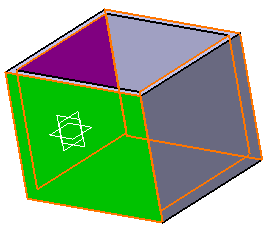
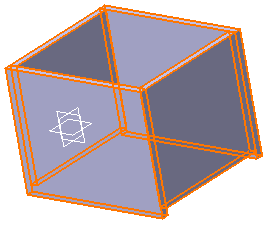
Faces to select Recognition result For example, if the initial part is a box such as shown below, you need to select two opposite inner faces, and outer faces on the other two sides of the box, in order to avoid overlapping when recognizing the walls.
In case faces are overlapping, you need to select the sides of each face. If you select only one face, the overlapping faces will be recognized as a unique pad and not as two independent walls.
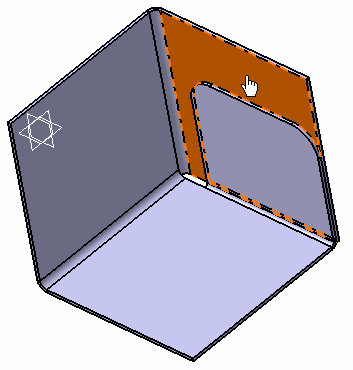
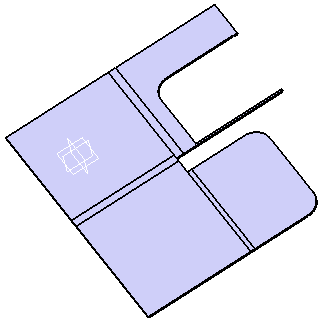
Face selected to be recognized as a wall
Result of recognition when unfolding
To avoid this, select first the inner side of the overlapping faces.
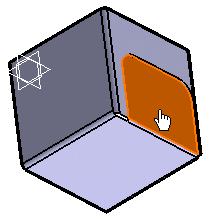
Then select the outer side.
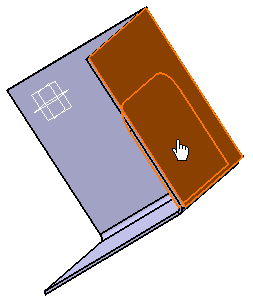
The overlapping faces will be recognized as independent walls.
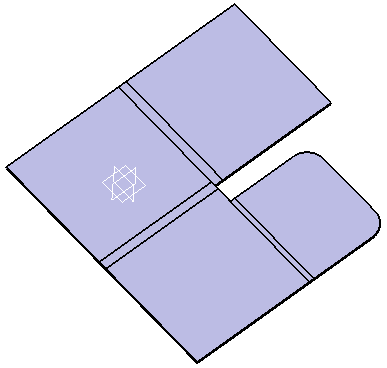
Recognizing Stamping Features
Consequently, the following types of stamps can be recognized:
- Circular stamp
- Curve stamp
- Surface stamp
- Bead
- Bridge
- Louver
The recognize feature enables to create a Generative Sheetmetal Design stamping feature from a V4 model or parts created with Sheetmetal Design.
-
Click Recognize
 .
The Recognize Definition dialog box is displayed.
.
The Recognize Definition dialog box is displayed. 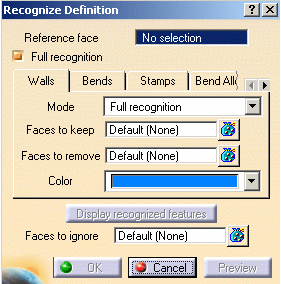
-
Select a reference face. It will be the reference face for unfolding and for the definition of the sheet metal parameters (i.e. all default parameters will be based on this face).
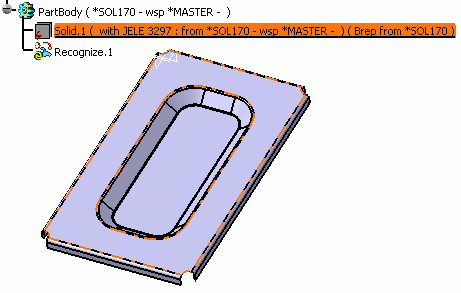
-
Click OK.
The stamps are generated from the geometry. 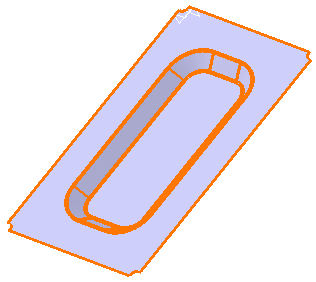

Three modes are available for the recognition : -
The Full recognition and Partial recognition modes work the same way as in the walls tab
-
The No recognition mode allows you to specify if you do not want stamps or bends to be recognized.

You can also force a face to be recognized as one feature by selecting it in the Face to keep field.
For instance, in the following part pink faces are usually recognized as walls and bends, and blue faces as a stamp. But you can also choose the blue faces to be recognized as walls and bends by selecting them in the Face to keep field of the Walls and Bends tab.
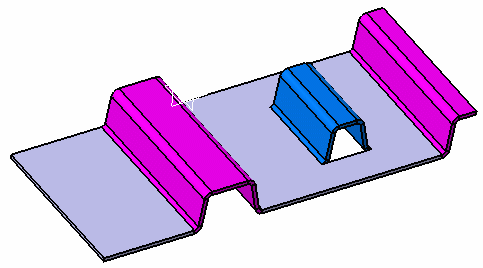
- There is no stiffening rib recognition, since the support feature for the stamp must be planar.
- Stamps containing inner contours such as flanged hole, flanged cutout cannot be recognized.
- Sharp stamps are not recognized.
-
Managing the Bend Allowance
-
Click Recognize
 .
The Recognize Definition dialog box is displayed.
.
The Recognize Definition dialog box is displayed. -
Select a reference face. It will be the reference face for unfolding and for the definition of the sheet metal parameters (i.e. all default parameters will be based on this face).
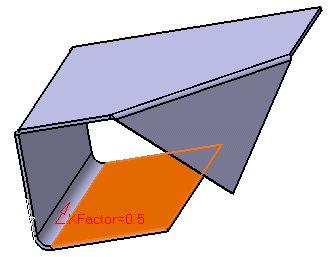
-
Click on the Bend Allowance tab.

-
Select the bend you want to recognize.

Every bend on which you specify a K-Factor is entered in the Bending face box. -
Specify the value of the K-factor.

- This K-Factor will only be applied on the bend you selected.
- The bends you do not select will keep the default K-Factor value.

You can also edit the K-Factor value by clicking on the K-Factor text symbol on the geometry. 
You cannot specify 2 different K-Factor values on the 2 faces of the same bend. -
Click OK.
![]()